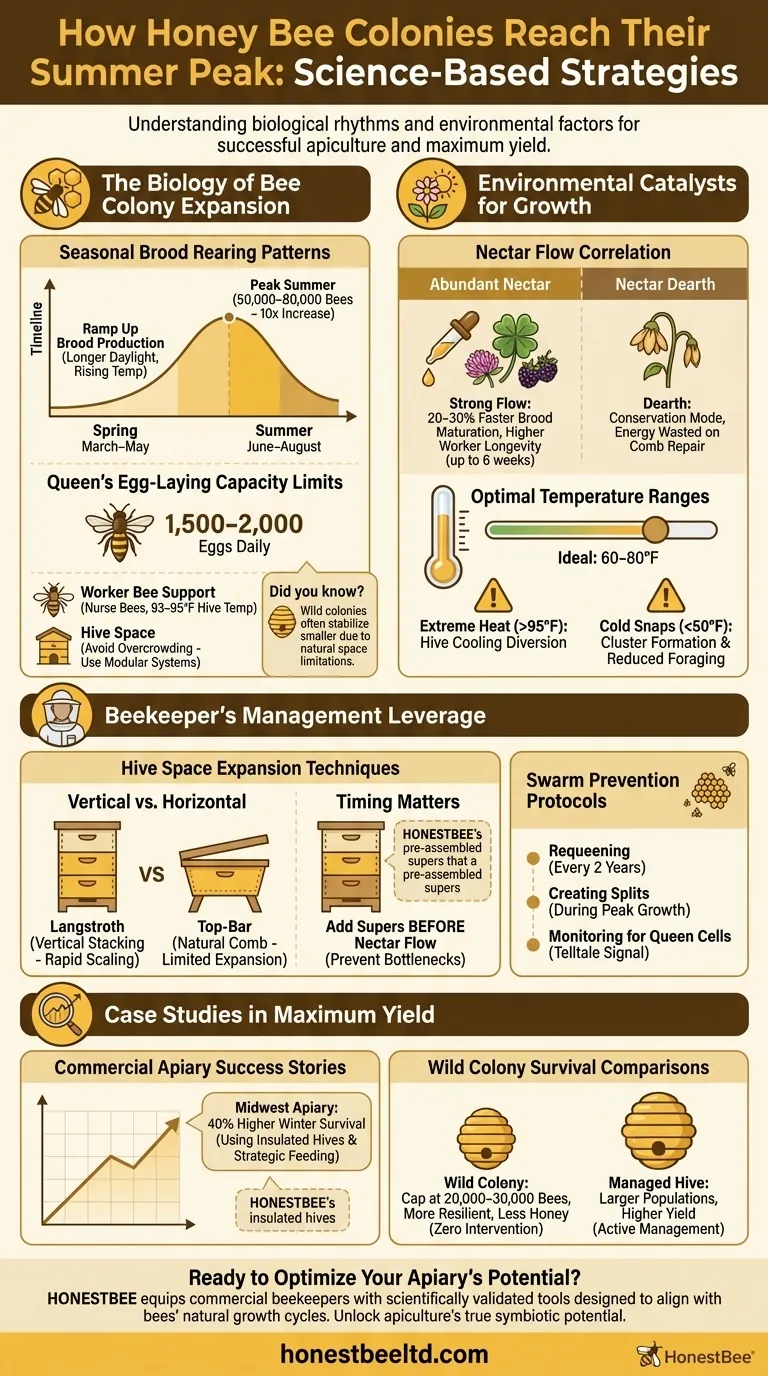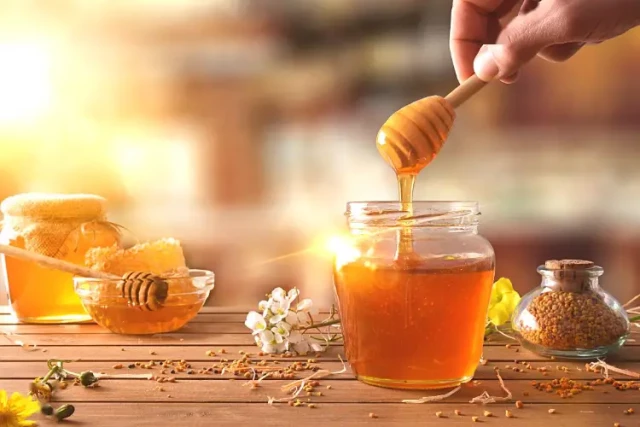Understanding the biological rhythms and environmental factors that influence honey bee colony growth isn't just academic—it's the foundation of successful apiculture. Whether you're a commercial beekeeper aiming for maximum honey yield or a distributor supplying essential equipment, recognizing these dynamics can transform outcomes.
The Biology of Bee Colony Expansion
Honey bees don’t grow their colonies randomly. Their expansion follows precise biological programming synchronized with seasonal cues.
Seasonal Brood Rearing Patterns
Research shows colonies ramp up brood production in spring, peaking in early summer when resources are abundant. This isn’t coincidental; longer daylight hours and rising temperatures trigger hormonal changes in worker bees, stimulating them to nurture more larvae. By midsummer, a single hive can house 50,000–80,000 bees—a tenfold increase from winter populations.
Queen’s Egg-Laying Capacity Limits
Even the healthiest queen has physical constraints. A top-performing queen may lay 1,500–2,000 eggs daily, but this depends on:
- Worker bee support: Nurse bees must feed larvae and maintain hive temperature (93–95°F is ideal for brood development).
- Hive space: Overcrowding slows egg-laying. Beekeepers using HONESTBEE’s modular hive systems can proactively add supers to prevent congestion.
Did you know? Wild colonies often stabilize at smaller sizes than managed hives, partly due to space limitations in natural cavities.
Environmental Catalysts for Growth
Bees are masterful at exploiting environmental booms—but only if conditions align.
Nectar Flow Correlation
A strong nectar flow (like clover or blackberry blooms) acts as a growth accelerator. Studies correlate consistent nectar availability with:
- 20–30% faster brood maturation
- Higher worker bee longevity (up to 6 weeks vs. 4 weeks during scarcity)
Conversely, nectar dearths force colonies into conservation mode. Bees may chew through improperly timed foundation (as observed in USDA field trials), wasting energy on comb repair instead of expansion.
Optimal Temperature Ranges
Bees thrive in 60–80°F daytime temperatures. Extreme heat (>95°F) forces workers to divert from foraging to hive cooling, while cold snaps (
Beekeeper’s Management Leverage
While biology sets the rules, beekeepers influence the game.
Hive Space Expansion Techniques
- Vertical vs. horizontal space: Langstroth hives allow vertical stacking (ideal for rapid scaling), while top-bar hives promote natural comb building but limit expansion.
- Timing matters: Adding supers before the nectar flow (not during) prevents bottlenecks. HONESTBEE’s pre-assembled supers help commercial apiaries scale efficiently.
Swarm Prevention Protocols
Swarming halves your colony’s workforce overnight. Proactive measures include:
- Requeening every 2 years to maintain egg-laying vigor
- Creating splits during peak growth phases
- Monitoring for queen cells (a telltale swarm signal)
Case Studies in Maximum Yield
Commercial Apiary Success Stories
A Midwest apiary using HONESTBEE’s insulated hives reported 40% higher winter survival rates, translating to stronger spring rebuilds. Their secret? Combining:
- Insulation to buffer temperature swings
- Strategic feeding during autumn dearths
Wild Colony Survival Comparisons
Wild colonies often cap at 20,000–30,000 bees—smaller than managed hives but more resilient to pests. The trade-off? Wild bees produce less honey but survive with zero intervention, highlighting the balance between yield and sustainability.
Ready to Optimize Your Apiary’s Potential?
HONESTBEE equips commercial beekeepers and distributors with scientifically validated tools—from modular hive systems to swarm-prevention kits—designed to align with bees’ natural growth cycles. Discover how our wholesale solutions can help you harness peak season productivity.
Final thought: The most prosperous colonies aren’t just managed; they’re understood. By working with bees’ biology rather than against it, we unlock apiculture’s true symbiotic potential.
Visual Guide

Related Products
- Professional Galvanized Hive Strap with Secure Locking Buckle for Beekeeping
- Long Langstroth Style Horizontal Top Bar Hive for Wholesale
- JZBZ Langstroth Queen Rearing Frame for Beekeeping
- Heavy-Duty Stainless Steel Clip-On Frame Perch
- Professional Grade Foldable Beehive Handles
Related Articles
- How to Choose a Beekeeping Starter Kit That Protects Both Bees and Beekeepers
- Beekeeping Essentials: How to Choose and Use Supplies for Healthy Colonies
- The Benefits of Beekeeping for Your Vegetable Garden
- The Comprehensive Benefits of Beekeeping
- How to Start Beekeeping Right: Essential Knowledge and Tools for Beginners




















